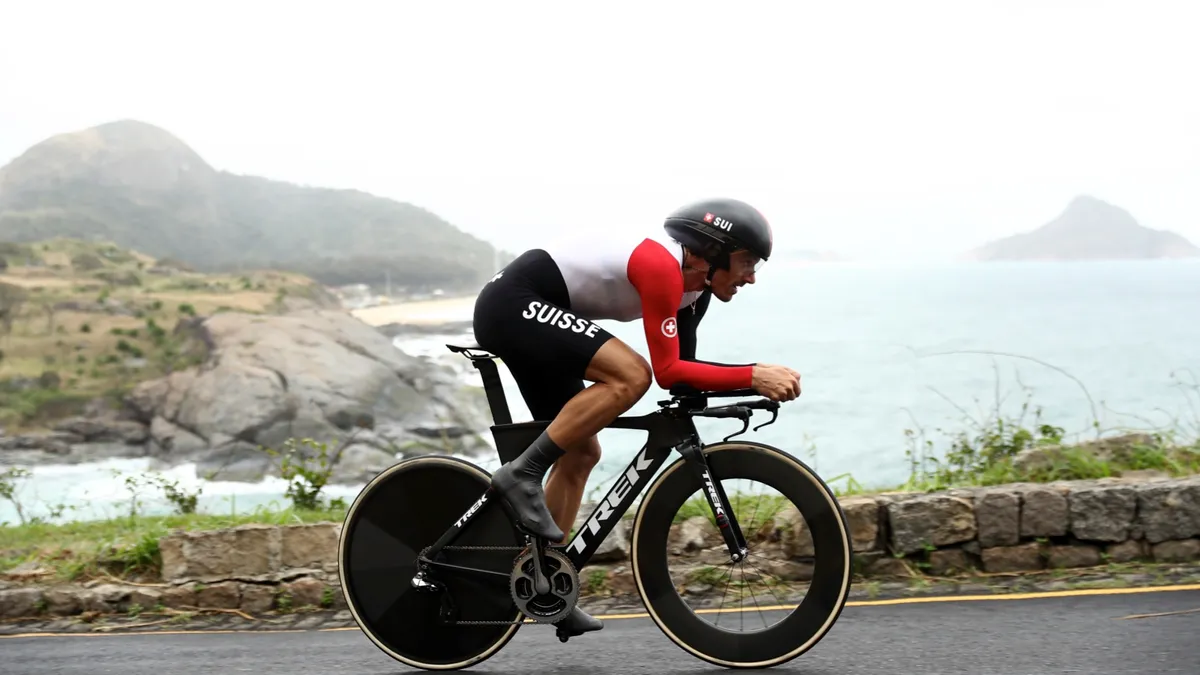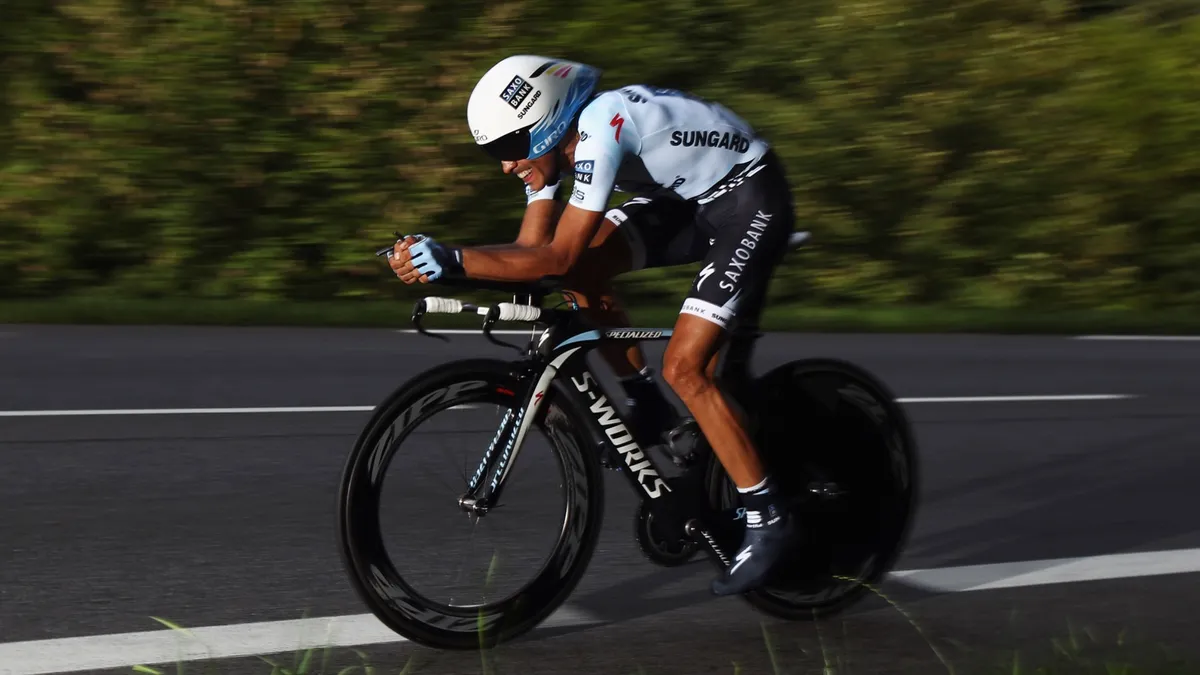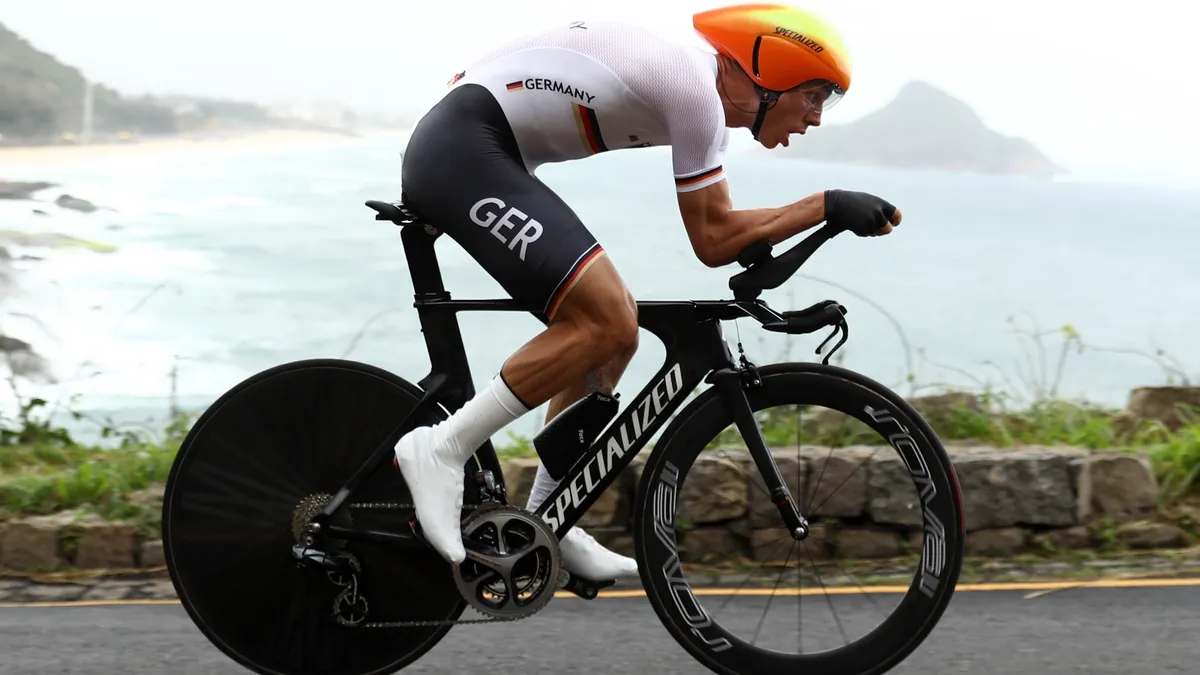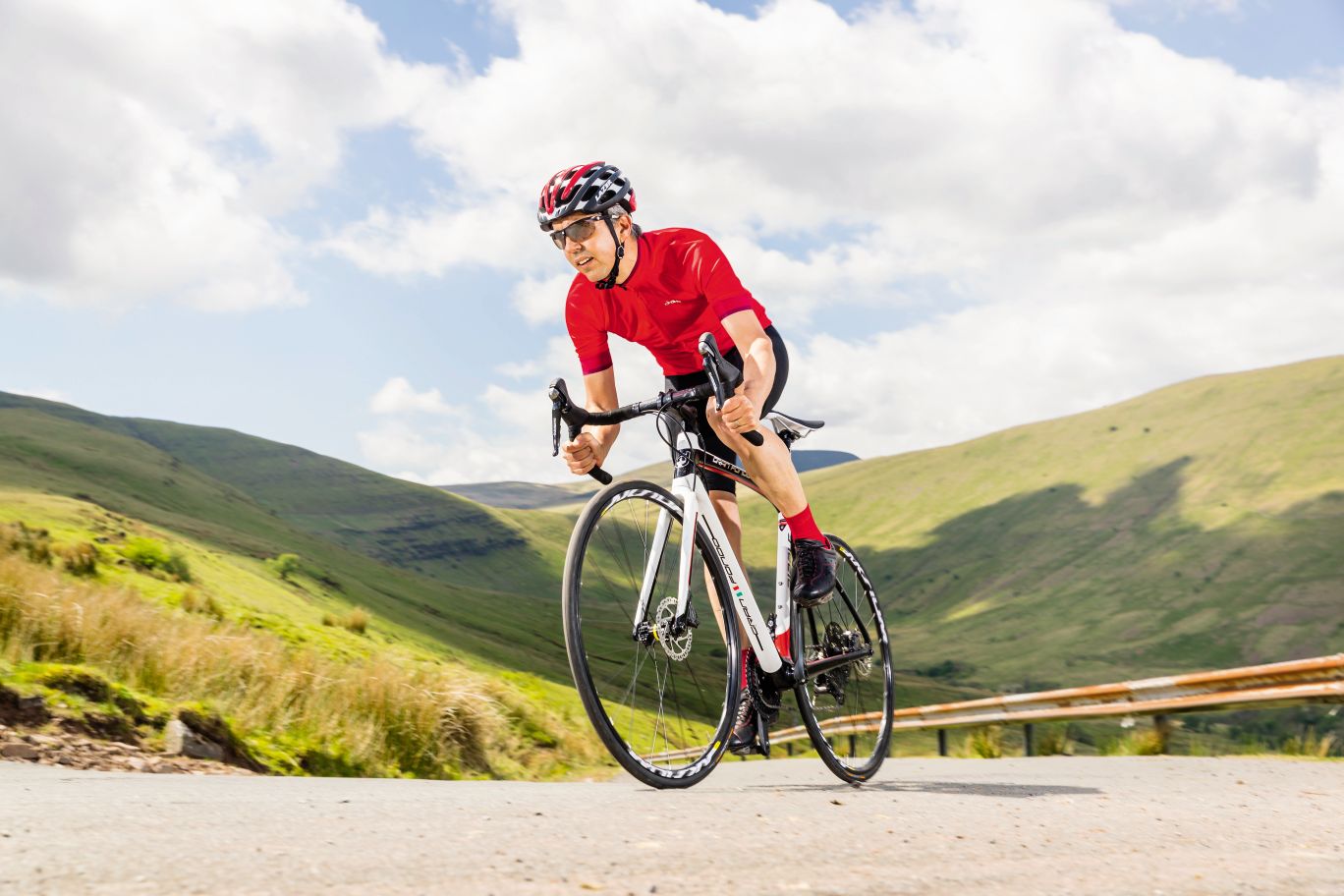Tony Martin is a classic time trial rider who gets exceedingly aero and has fantastic sustainable power that he can put out almost robotically, which is what a time-triallist should be like.
He’s a fantastic example — him and Fabian Cancellara, before he retired, are the two finest. Cancellara probably relied a little bit more on power, whereas Tony Martin relies more on that classic, dart-like aero front and flat back.
- 6 hardcore training sessions to take your cycling to the next level
- How to pedal smoothly like Ian Stannard
1. Find a natural position
If you watch Tony Martin in a time trial you’ll see that his head doesn’t move. That’s because he is constantly thinking of the position of his head and arms, all the while riding at Functional Threshold Power.
Because you’re pushing the limit during a time trial, your position needs to feel natural, rather than forced. Body movement makes you wider and less aero so it’s important to be able to stay still.
You can gradually alter your position over time in search of further gains, but there will come a point where aero advantages are outweighed by a decrease in your sustainable power.

2. Don't stiffen up
Martin’s classic time trial position is worth trying to emulate. He manages to get his head tucked in between his shoulders, maintains a flat back and perches in that ideal position ahead of the bottom bracket to deliver maximum power.
But you’ve got to feel stable and comfortable, so you can stay still and not lose power to unnecessary movement.
3. Be narrow
Yes, it’s obvious, but one of the things Martin does well is to make himself so narrow. You can have the most aero bike in the world, but it’s your body that provides the majority of the wind resistance when you’re riding. As such, and bearing in mind the necessity of having a position comfortable enough to maintain over race distance, your priority should always be to get your body narrower, and lower.
Bringing the aero bar extensions closer together will narrow the gap between your elbows to echo that Martin ‘dart-like’ position.

4. Find your optimum saddle position
Martin always manages to stay planted in the saddle because he has the body composition and the levers to hold that position. A strong core will help, but a lot of this is down to physical size.
Someone like Alberto Contador has a phenomenal core but tends to move forward in the saddle and shuffle back because more of his weight is planted through his arms in that forward position.
He tends to slip forward until it becomes uncomfortable, then he moves back. Lowering the saddle might alleviate that, but he might well lose power by doing so. Find your optimum saddle height through micro-adjustments until you hit the sweet spot between the twin abilities of holding position and power.
The Golden Rule: keep the chain tight
It sounds simple, but if you can keep the chain stretched tightly across the chainrings and cassette cogs then you’re ensuring maximum efficiency.
To achieve this, you’ll need to apply tension to the chain throughout the pedal stroke, which is where being able to push and pull through the traditional dead spots will serve you well.
For some riders this comes naturally, but if you’re not one of them, it is something you can work on and improve. Try incorporating some pedalling drills into your turbo sessions, aiming to stay smooth and avoid bouncing in the saddle at a variety of cadences.

